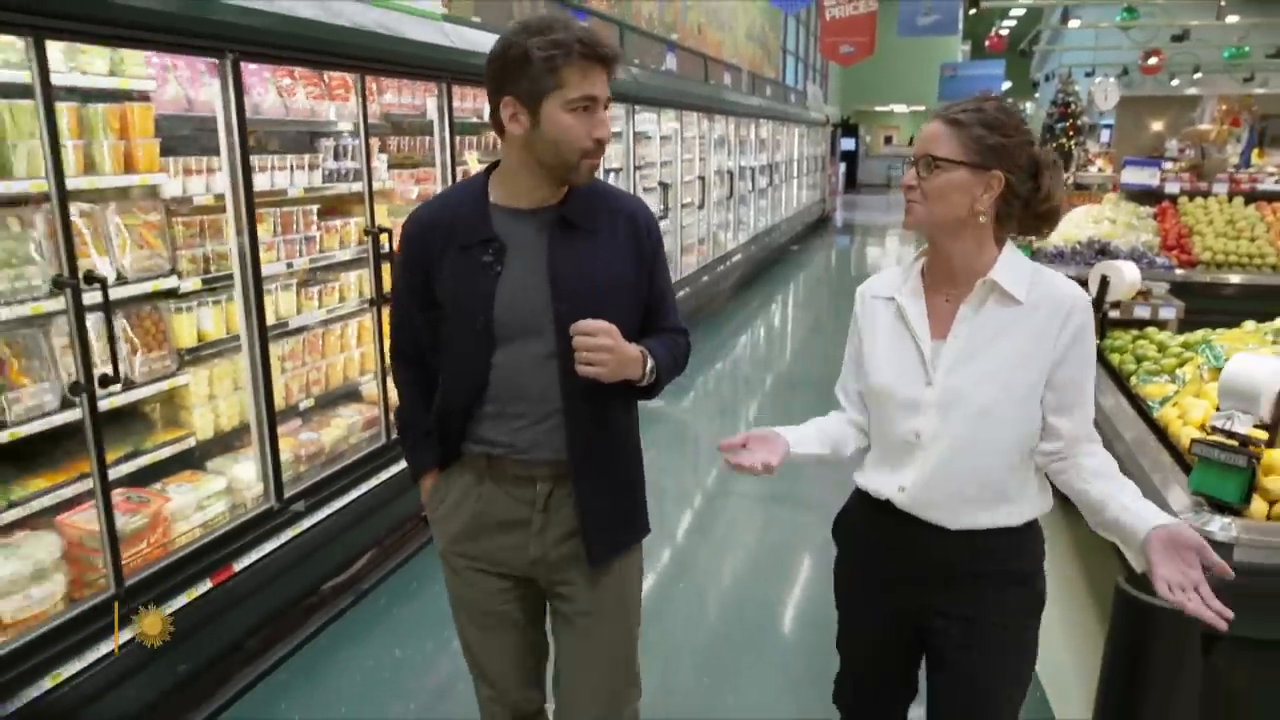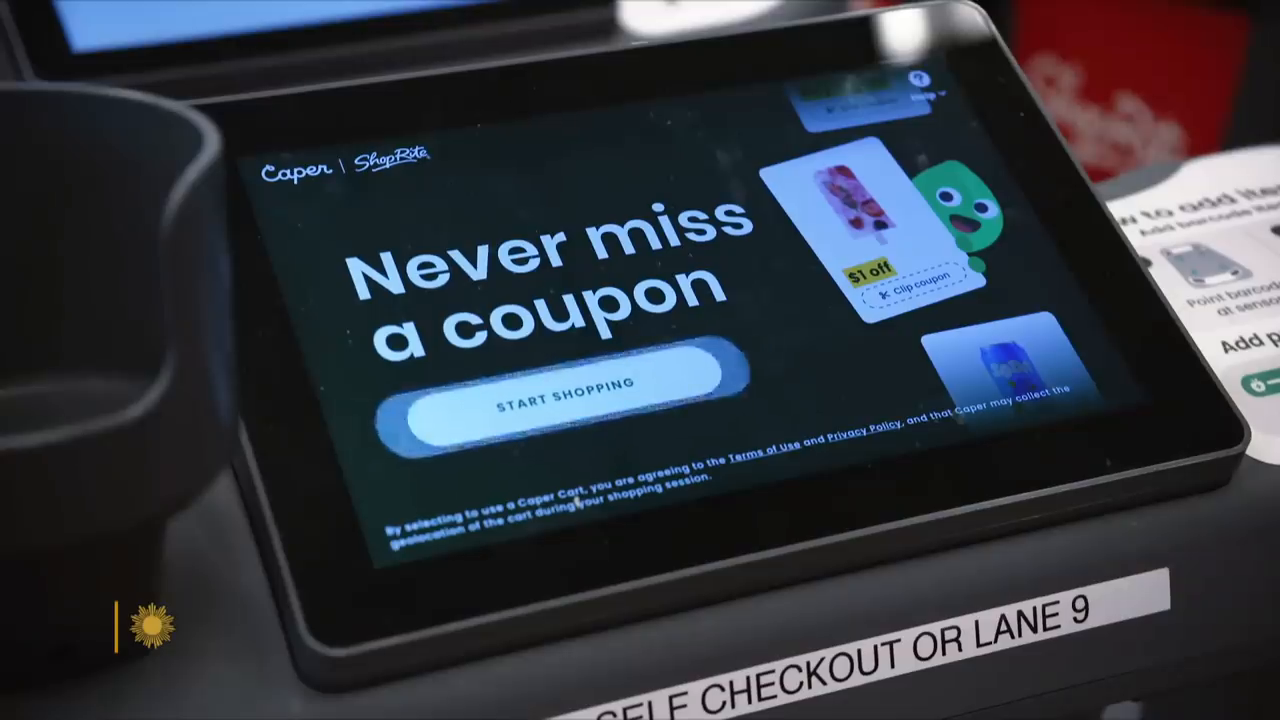The reinvention of the grocery cart: from utility to innovation
Shopping carts, those ubiquitous companions in every grocery store, rarely get the appreciation they deserve. Often overlooked, these functional tools have shouldered the load of countless shopping expeditions. But now, in the age of technology, the humble grocery cart is getting an exciting upgrade. A recent innovation, the Caper Cart, is redefining the shopping experience and turning an ordinary chore into an extraordinary adventure.
This article dives into the evolution of the grocery cart, its high-tech transformation, and what it means for the future of retail.
The humble beginnings of the grocery cart

The iconic beginnings of the shopping cart in the 1930s shaped how we purchase goods today
The story of the grocery cart begins back in 1937 with an Oklahoma City grocer named Sylvan Goldman. Recognizing a problem many customers faced—limited carrying capacity with hand baskets—Goldman designed the world's first grocery cart by ingeniously adding wheels and a handle to a folding chair. This innovative yet simple invention allowed shoppers to carry more items with ease, prompting increased spending and convenience.
Despite its practicality, the shopping cart didn’t initially catch fire. Sylvan Goldman had to hire actors to walk around stores and fill carts to demonstrate their usefulness before widespread adoption occurred. From these modest beginnings, shopping carts became a staple in markets, evolving alongside the grocery industry to accommodate changing consumer habits.
The Caper Cart: a technological makeover

The Caper Cart integrates digital screens, AI, and GPS for a futuristic shopping experience
Fast forward to today, and the world of shopping carts has entered the era of digital innovation. The Caper Cart, a creation now tested at Price Chopper stores outside Kansas City, introduces features that revolutionize the way we shop. With digital screens mounted on the cart, GPS guidance, and AI-powered cameras, this sophisticated tool is transforming the mundane act of grocery shopping into an interactive activity.
Pat and Mike Foster, local shoppers at Price Chopper, shared their enthusiasm for the new cart, stating it was disappointing when the high-tech carts weren’t available. This high demand reveals how quickly shoppers are embracing the Caper Cart—a device equipped to guide customers through stores and simplify the process of finding items.
One standout feature of the cart is its ability to automatically scan products placed into the basket using AI-enabled cameras. Not only does this remove the need for manual scanning, but instant coupons are also generated for shoppers, highlighting deals they might otherwise miss. Additionally, an integrated payment system on the handlebar allows customers to check out without waiting in long lines.
From chore to entertainment

The Caper Cart is not just practical; it makes shopping fun and engaging, turning a task into an experience
As Casey Brocker from Price Chopper explained, the digital cart is not only about convenience; it’s about making shopping enjoyable and engaging. By blending analog and digital experiences, the Caper Cart turns grocery shopping from a chore into a recreational activity, resonating with both tech-savvy and traditional shoppers alike.
David Macintosh, a representative from Instacart, envisions the Caper Cart as a way to gamify retail shopping. The cart integrates seamlessly with retailers’ existing loyalty programs, allowing customers to earn points and rewards through their interactions. For instance, as soon as a shopper places an item into the cart, it identifies the item and displays relevant coupons or discounts on the screen. This integration not only enhances the user experience but also encourages repeat visits and increased spending.
The technology behind Caper Cart

Caper Cart’s AI cameras and weight scales modernize the traditional shopping cart experience
The Caper Cart combines artificial intelligence, a sleek user interface, and advanced technology to deliver more than just convenience. For example, AI-powered cameras recognize items as they are added to the cart, while a built-in scale automatically weighs fresh produce. When an item is scanned and approved, the cart displays a green light of confirmation, ensuring shoppers know their items have been registered.
The technological upgrade of grocery carts is a result of Instacart’s significant investment. In 2021, Instacart spent an astounding $350 million to acquire the technology that powers the Caper Cart. This massive expenditure underscores the company’s confidence in the transformative potential of smart shopping carts.
Why reinvent the cart?
The transformation of grocery carts is not happening in isolation. Retail experiences have traditionally lagged behind the rapid innovation seen in online shopping. As consumer expectations continue to rise, the need for in-store shopping to complement the convenience and personalization of e-commerce has led to the rise of solutions like the Caper Cart.
Certainly, grocery shopping in-store hasn’t fundamentally changed since the invention of the shopping cart in the 1930s. Meanwhile, e-commerce has revolutionized consumer habits with seamless search options, tailored recommendations, and delivery services. By integrating retail loyalty programs, gamified rewards systems, and precision technology, innovations like the Caper Cart meet shoppers at the intersection of technology and tradition.
A look ahead: the future of food retail

Caper Cart customers enjoy a futuristic experience that could define the future of retail
Aside from the immediate convenience benefits, smart shopping carts open the door for grocery stores to collect data-rich insights into consumer habits. Understanding where customers spend their time, what items they prioritize, and how they interact with promotions can help retailers refine their store layouts and enhance marketing strategies.
Moreover, such technology has broader implications for accessibility. With GPS navigation, the Caper Cart assists shoppers in quickly locating items, an invaluable tool for those with mobility challenges or new shoppers unfamiliar with store layouts.
Although the high-tech cart is still being tested, its potential to shape the future of grocery shopping is undeniable. As more stores adopt smart carts like the Caper Cart, shoppers everywhere may soon enjoy a smoother, more engaging retail experience.
Conclusion: where technology meets tradition
Since its invention in 1937, the humble grocery cart has seen tremendous growth and transformation. From a simple solution to carrying groceries to today’s AI-powered, digital innovations, the shopping cart has proven to be more than just a utility—it’s a dynamic tool shaping the future of retail.
The Caper Cart exemplifies how technology can make a routine task not only more efficient but also enjoyable. With features like automatic scanning, coupon generation, and easy checkout, it modernizes the grocery shopping experience while keeping consumers at the center. As the retail industry evolves, the Caper Cart is a shining example of how technology can reinvent even the simplest aspects of our daily lives.
What started as a folding chair with wheels has become a symbol of innovative thinking and customer-centric design, showing just how far we’ve come in improving the way we shop. So, next time you head to the grocery store, keep an eye out—you might just find yourself embarking on a journey with the cart of the future!
